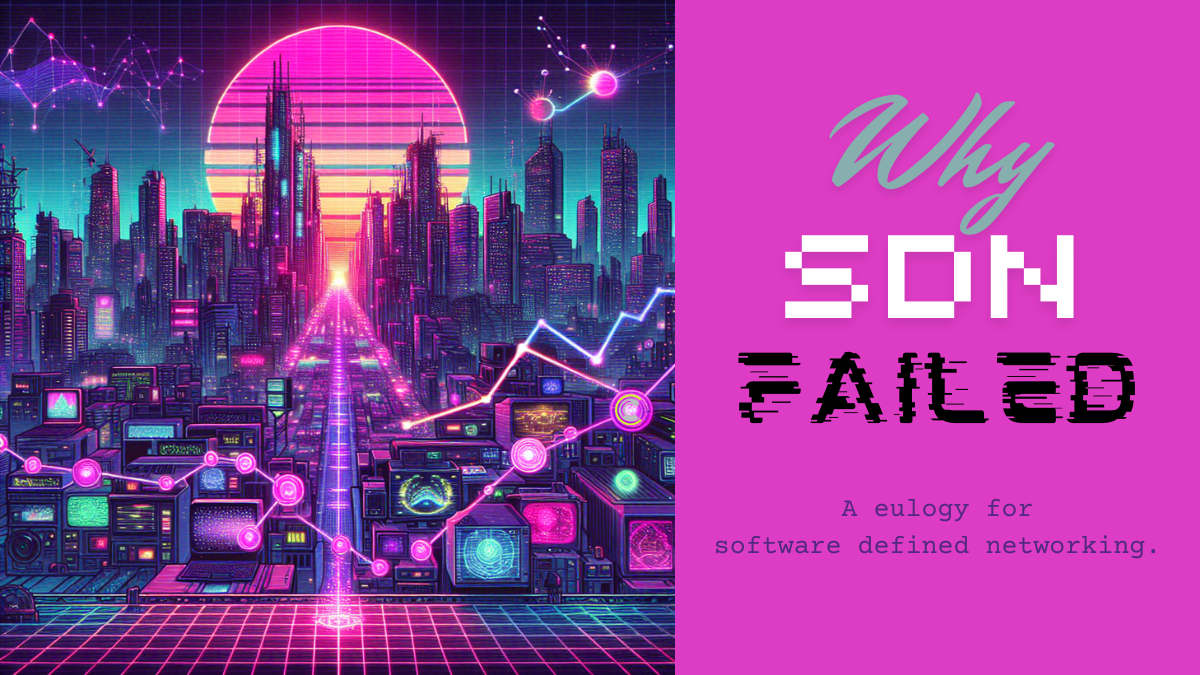
When we look back at the early 2010s, the buzz around Software-Defined Networking (SDN) was palpable. SDN promised to revolutionize the way networks were managed and controlled by decoupling the control plane from the data plane. This vision, embodied by the introduction of OpenFlow, seemed like it could be the answer to many networking challenges. However, SDN, as it was initially conceived, largely fell short of its lofty promises. So, why did SDN fail to make the impact many anticipated? Let’s dive into the reasons behind its shortcomings.
The Overhyped Promise of OpenFlow
In the early days of SDN, OpenFlow was presented as the key to unlocking the potential of network programmability. The idea was to separate the control plane, which makes decisions about how traffic should be routed, from the data plane, which forwards the traffic according to those decisions. This separation was supposed to provide unprecedented flexibility and control over network behavior.
However, the reality did not align with the hype. Both Chris and Grizz had firsthand experiences with OpenFlow and found it lacking. OpenFlow’s promise of a universal API for network devices was undermined by a significant limitation: not all network devices supported OpenFlow, and convincing vendors to adopt a new, uniform API was a Herculean task. This created a fragmented landscape where achieving a truly integrated SDN environment proved nearly impossible.
The Challenge of Universal Adoption
For SDN to work effectively, every network device would need to support OpenFlow, or a similar standard. This level of uniformity is unprecedented in the networking industry, where diversity in hardware and software is the norm. Getting every manufacturer to implement and support a new API is an ambitious goal, and it became clear that this was not going to be feasible in practice.
Moreover, even if you could manage to get OpenFlow working in your own network, you would still face limitations when interacting with external networks. Major carriers and service providers were unlikely to allow external entities to insert forwarding rules into their infrastructure due to security and operational concerns. This meant that SDN’s benefits were largely confined to internal networks, leaving the broader networking ecosystem largely unaffected.
The Reality of Network Equipment Replacement
Another significant hurdle for SDN was the cost and complexity of replacing existing network infrastructure. The idea that you could overhaul an entire network to fit the SDN model was unrealistic for most organizations. The cost implications and the logistical challenges of deploying new hardware and software on such a large scale were prohibitive.
The promise of “bare metal” networking—using generic hardware and open-source software—also fell short. While theoretically appealing, in practice, the cost of additional operational and support requirements often negated the savings. Moreover, the staff needed to manage and maintain such systems required specialized skills, adding to the overall expense.
The Shift Towards Network Automation
In hindsight, the real value that many were seeking from SDN was not the separation of the control and data planes but rather network automation and orchestration. The ability to manage and automate network operations centrally, regardless of the underlying hardware, was the goal. As a result, the focus gradually shifted from the theoretical benefits of SDN to practical network management solutions.
Technologies such as EVPN and VXLAN emerged, providing some of the benefits of SDN—like network abstraction and improved management—without requiring the radical overhaul that SDN originally envisioned. These technologies allowed for greater flexibility in network design while maintaining compatibility with existing infrastructure.
The Legacy of SDN
While SDN did not fulfill its initial promise, it was not a complete failure. The principles of SDN—particularly the emphasis on automation and centralized control—continue to influence modern networking solutions. The industry has learned valuable lessons from the SDN experience, and these lessons have informed the development of more practical and achievable network management strategies.
In conclusion, SDN’s failure to live up to the hype can be attributed to several factors: the unrealistic expectations around OpenFlow’s universal adoption, the challenges of network equipment replacement, and the eventual realization that network automation was the true objective. The evolution from SDN to more practical automation solutions reflects a maturing understanding of what is truly valuable in network management.